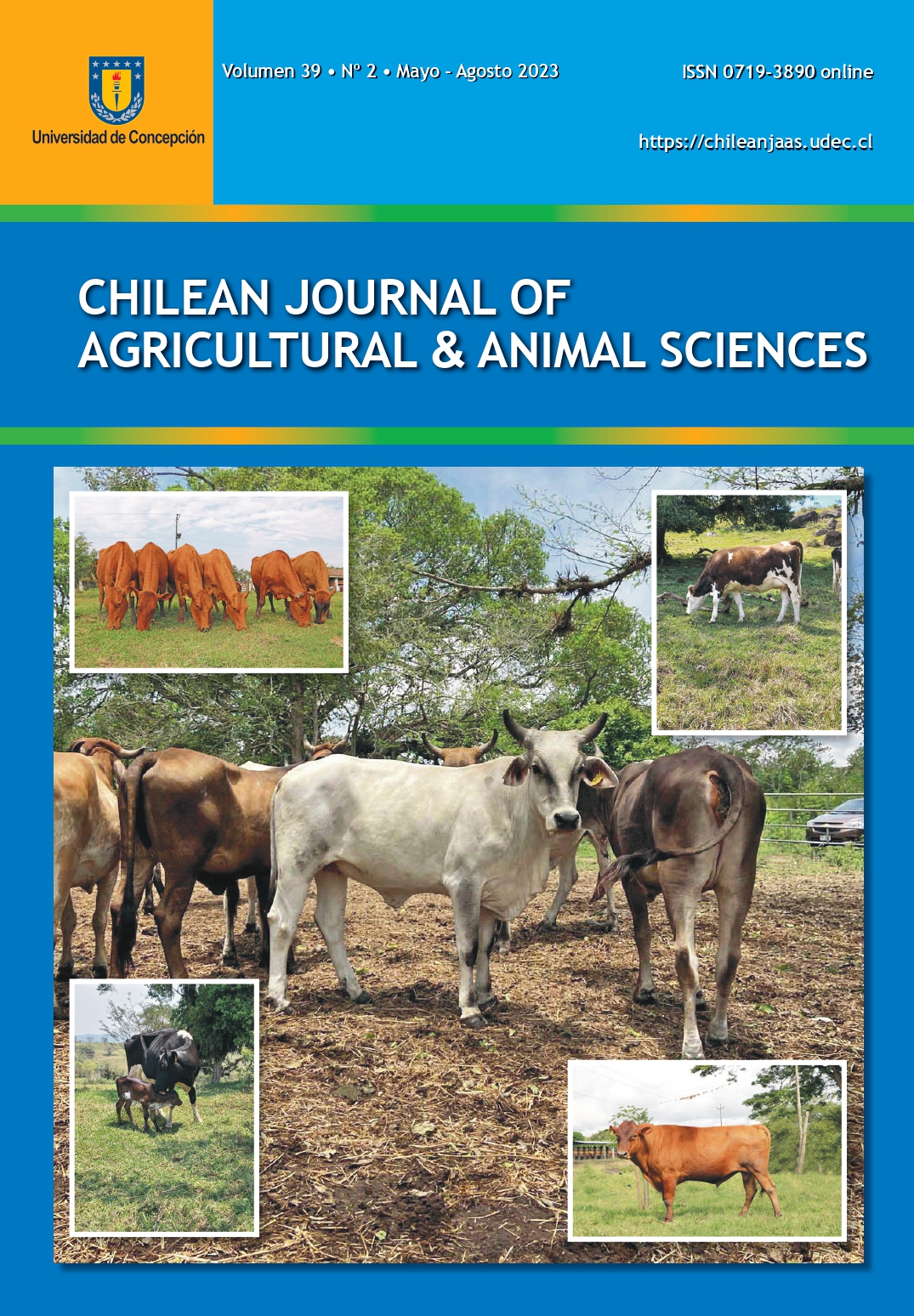DIGESTIBILITY, RUMEN FERMENTATION, RUMEN MICROBIOTA, AND LIPID PEROXIDATION IN SHEEP SUPPLEMENTED WITH LIPOIC ACID
DOI:
https://doi.org/10.29393/CHJAA39-17DRMP60017Keywords:
antioxidant, in situ digestibility, oxidative stress, peroxidationAbstract
Lipoic acid (LA) reduces oxidative stress and stimulates the immune system. However, data on its use in ruminants is limited. The objective of this study was to determine the effects of LA supplementation on free radical production, rumen variables, and feed digestibility in sheep fed high-grain diets. Nine rumen-cannulated Suffolk sheep were randomly assigned to three treatments: control (LA0 ), no LA inclusion; supplementation of 10 (LA10) mg LA kg-1 body weight (BW); and supplementation of 20 (LA20) mg LA kg-1 BW. In situ (ISDMD) and in vitro (IVDMD) degradation of dry matter and ruminal variables were evaluated. Total bacteria (TB), cellulolytic bacteria (CB), and protozoa (P) were also determined. Thiobarbituric acid reactive substances (TBARS) were evaluated in blood samples at the beginning and end of each experimental period. The ruminal variables and IVADDM were analyzed using a PROC GLM model with a repeated 3 × 3 latin square design, while means were compared using pairwise Tukey tests. LA supplementation did not affect (p > 0.05) the ruminal variables under study. LA modified (p < 0.05) ISDMD at 4 h in LA10, while no differences were found in terms of IVDMD among the treatments. The LA dose of 10 mg kg-1 BW increased CB (p < 0.05) and decreased TB (p < 0.05). TBARS differed (p < 0.01) among the treatments and evaluation periods and were higher (p < 0.05) 15 d after administration. In conclusion, LA supplementation in sheep had an antioxidant effect, reducing oxidative stress 15 d after administration, with slight differences in the ruminal variables evaluated.
Downloads
Published
How to Cite
Issue
Section

This work is licensed under a Creative Commons Attribution 4.0 International License.







